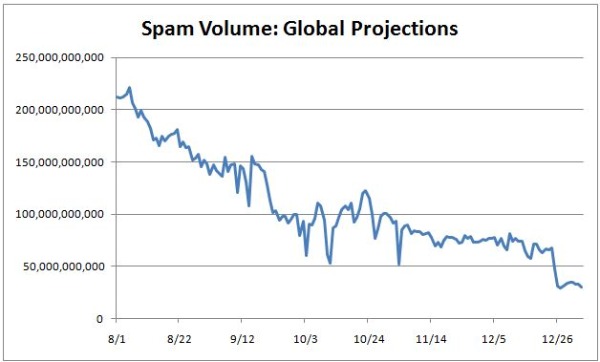The End of Spam?
Nobody really knows why just yet, but according to security software company Symantec, global spam and junk mail levels have been falling since late August

Want to make a million dollars without leaving your house or invest in a new Nigerian start-up? Or maybe you just want to opt out of the seemingly inescapable maelstrom of the millions of automated spam messages that inundate the inboxes of Americans every month? If you favor the latter option, you may be in luck: Spam and junk mail appear to be on the decline.
According to Symantec, the largest maker of security software for computers, global spam levels have been dropping since late August before falling sharply in December, around Christmas.
What caused the drop? Nobody knows for sure, but Symantec's Eric Park offered a potential answer on the companies Connect blog: the degradation of the automated bots that circulate most of the world's spam. "According to MessageLabs, there was a huge reduction in output from the Rustock botnet, which was by far the most dominant spam botnet in 2010," Park wrote. "Since December 25, the Rustock botnet has basically disappeared as the amount of spam from it has fallen below 0.5% of worldwide spam. In addition to the decline in the Rustock botnet activity, MessageLabs also pointed out that two other major botnets disappeared off of the spam map. The Lethic botnet has been quiet since December 28, and the Xarvester botnet went silent on December 31."